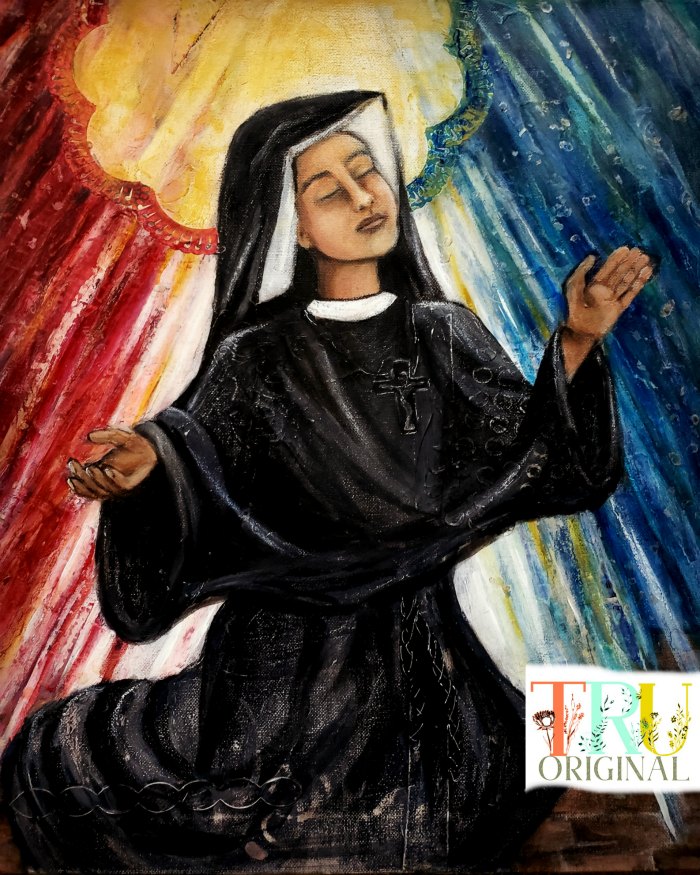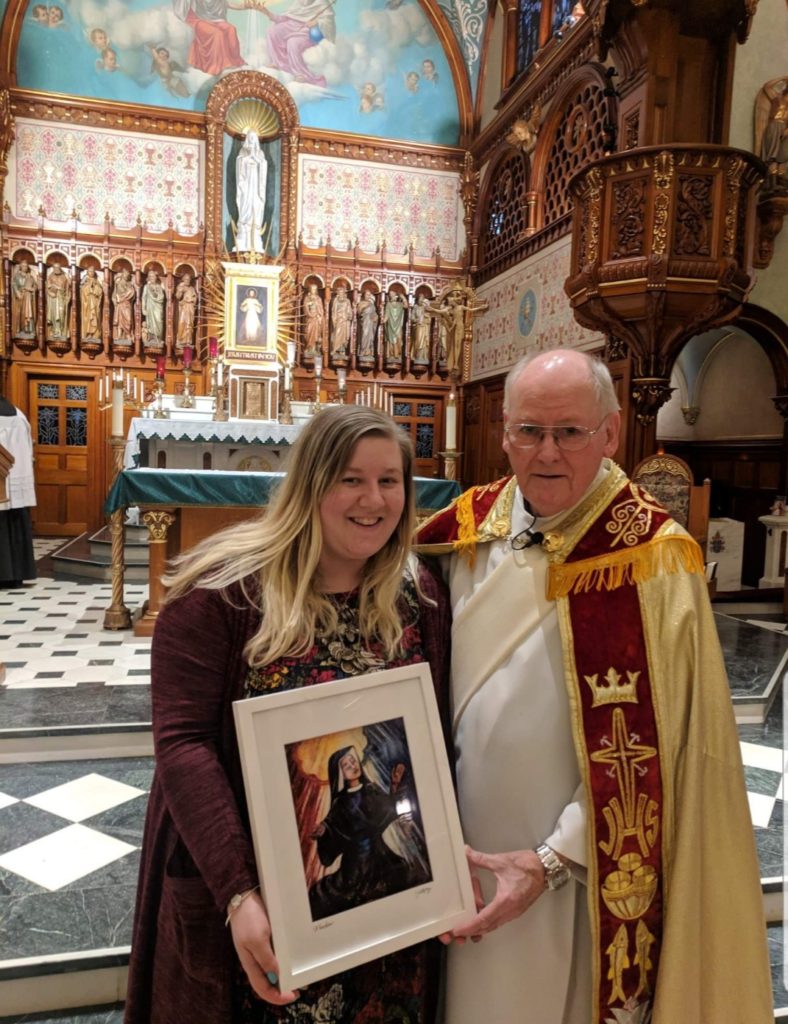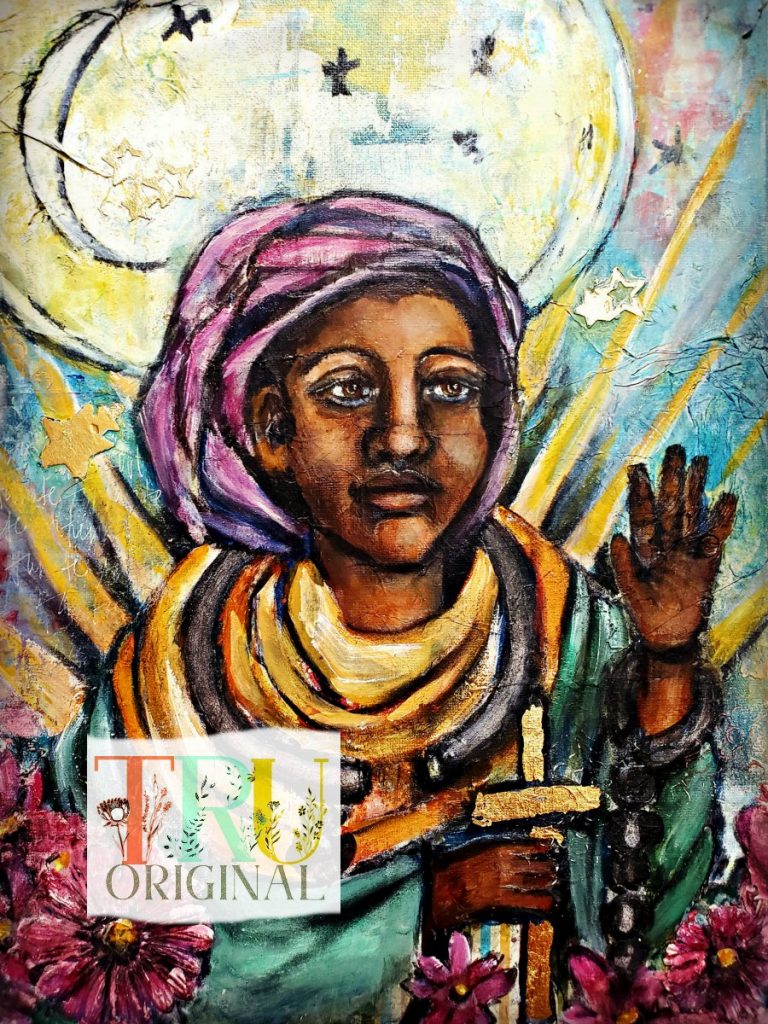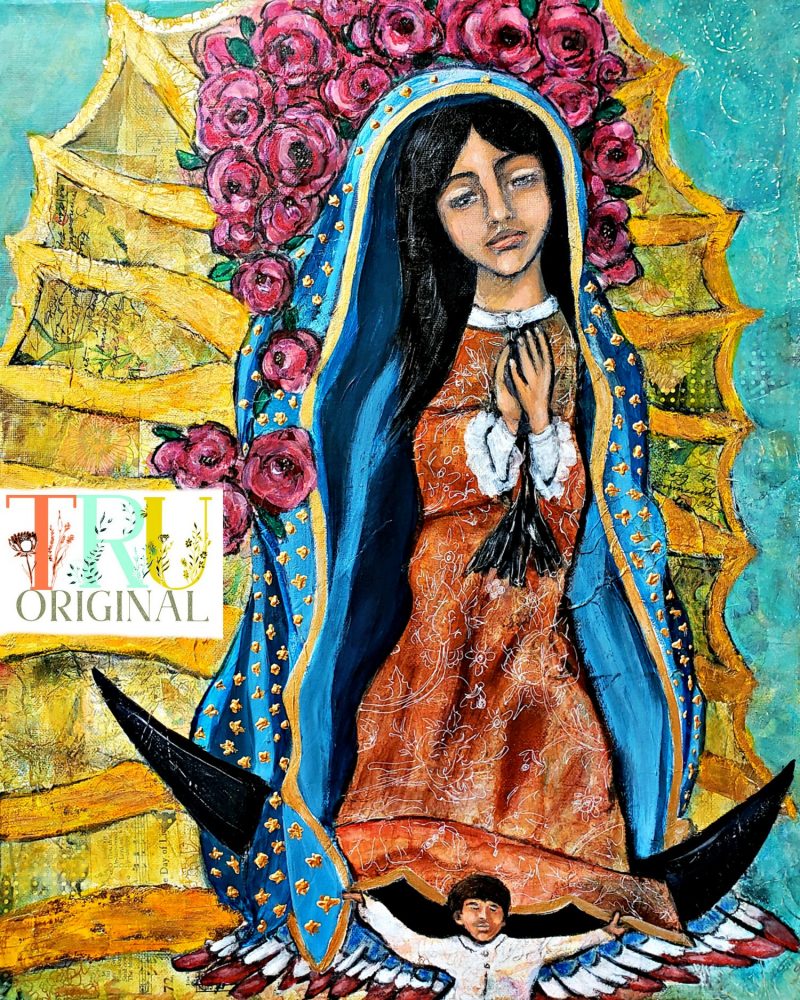St. Faustina

Apostle of Mercy
As you know by now, before i prepare to paint a Saint, I pray with them and ask, “how would you like to be portrayed?” The only thing that Faustina wanted was to be on her knees under His merciful Rays. She wanted to have a look of peace on her face, submitting herself to these rays, this shower of mercy.
I painted St. Faustina rather quickly but she was quite particular about the depths and importance of the Rays, because of this, the Rays took me over 2 1/2 weeks to finish. They are layer upon layer of color and medium. Finally, Faustina was pleased and the icon was completed. (side note… watching the movie Love and Mercy, i was shocked to see how Faustina instructed artist Eugene Kazimierowski, in the same manner she hounded, i mean inspired me! i cried like a baby in the theater at the confirmation of her guidance. ) In my frustration I complained, “why have you been so hard?!” Her reply was “do you think mercy is easy?” I knew interiorly that she was asking me to be merciful with myself. And I thought of the crucifix.
Jesus died for me in His mercy. Being merciful with myself is really embracing His merciful love in humility.
It takes humility to be forgiving, a lot of humility. When we can forgive ourselves, we are acknowledging that we are a sinner and nothing more, and that we need God.
Someone asked me once the difference between mercy and grace…the crucifix, that is mercy! I finished this icon of St. Faustina on Our Lady of Mercy feast day, Sept. 24… I just can’t make this stuff up! It’s just too good!
He who knows how to forgive prepares for himself many graces from God. As often as I look upon the cross, so often will I forgive with all my heart – St. Faustina

This picture was sent to me by a sweet young lady who took my Saint Faustina icon to The National Shrine of Divine Mercy to be blessed! Wow, oh wow! Felt like i was with her in spirit, and was so happy she shared this with me. xo


